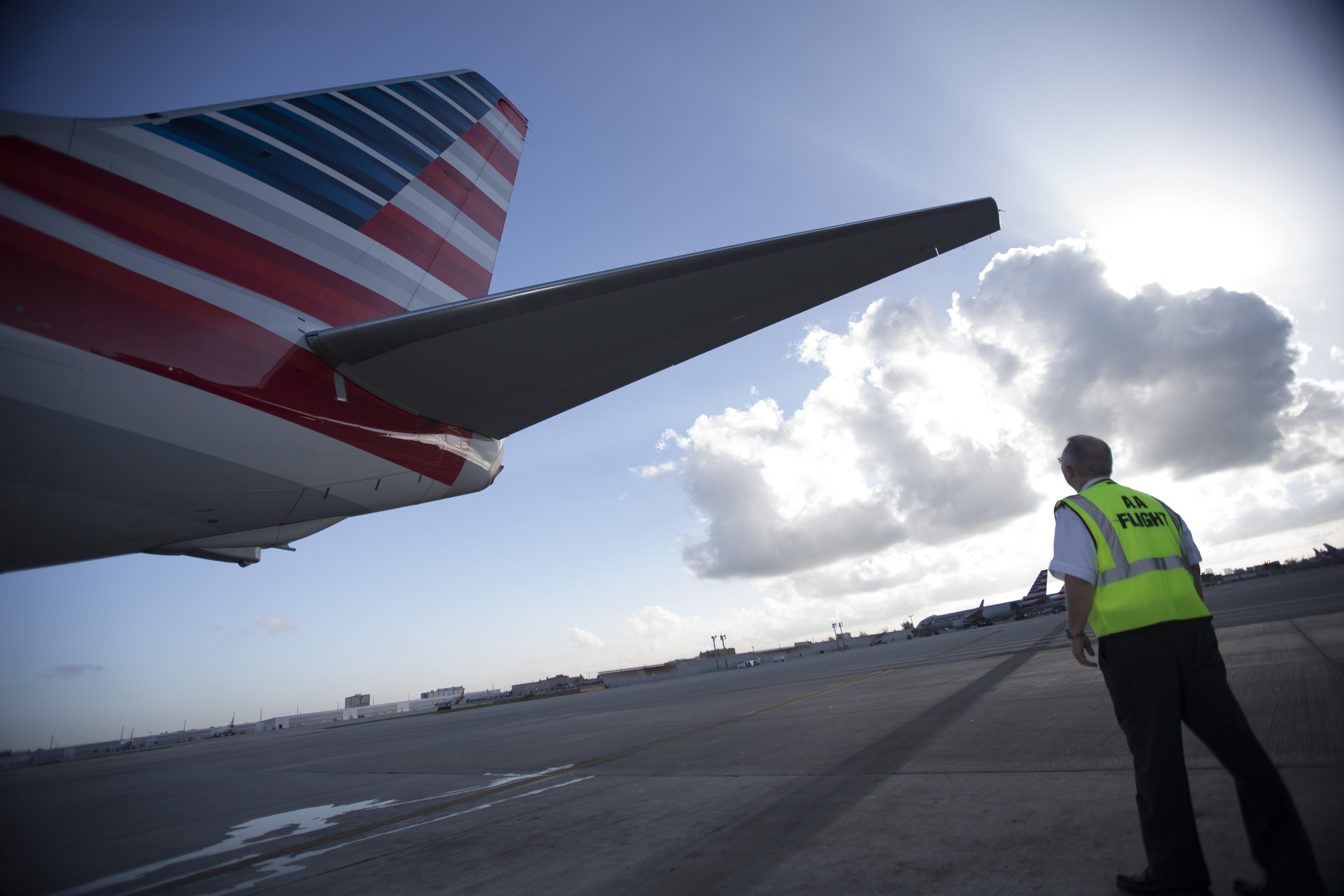
American Airlines and Delta Air Lines have told employees that more staff cuts are needed to match operations with the significantly reduced demand environment heading into the winter season, putting pressure on U.S. lawmakers to extend financial support.
Fort Worth, Texas-based American said its current plan is to furlough 19,000 employees in October following expiration of provisions tied to federal aid that prohibits involuntary job cuts. The moves would be in addition to 12,500 employees who have left through voluntary separations, and 11,000 that will be on temporary hiatus in October.
Delta told its pilots that it will furlough 1,900 of them in October, with notices slated to go out within days, in anticipation of lower demand for the foreseeable future. The Atlanta-based carrier has shed 17,000 of the 91,000 employees it started 2020 with through voluntary programs but said it must shrink more in light of booking trends that have U.S. airlines carrying 70-75% fewer passengers than at this time in 2019.
American is in a similar position.
“Based on current demand levels, we at American now plan to fly less than 50% of our airline in the fourth quarter, with long-haul international particularly reduced to only 25% of 2019 levels,” American CEO Doug Parker and president Robert Isom told employees in an Aug. 25 memo.
Both American and Delta are among the U.S. carriers pushing Congress for more financial support amid the ongoing pandemic beyond the $50 billion in grants and loans set aside for the industry. The most popular program, the U.S. Payroll Support Program (PSP), was set up to support workforces through Oct. 1, or about six months. The hope was that normal business activity—including demand for travel nearly obliterated in the early days of the COVID-19 pandemic—would rally quickly.
But that has not happened, as restrictions meant to prevent the spread of the virus have wiped out many business and leisure activities supported by travel, such as conferences, major sporting events, and visiting friends and relatives.
Airlines, knowing the post-Oct. 1 demand environment would be weaker than before the pandemic, have offered waves of voluntary separations and hiatuses to reduce payroll costs. But with demand even lower than expected and hopes of a recovery hinging mostly on a vaccine that does not exist, airlines insist they must shrink even more to stop losing money unless they get additional financial support.
In American’s case, its fourth-quarter schedule is slated to be 21% below what it was projecting in July, Parker and Isom said.
“The one possibility of avoiding these involuntary reductions on Oct. 1 is a clean extension of the PSP,” they told employees in the memo.
Congress is considering a PSP expansion as part of a new, additional round of pandemic-related relief and stimulus funding, but divisions between Democrats and Republicans have the legislation at a standstill.
The planned reductions are not a surprise.
“We’ve spent the summer months determined to try and avoid, but preparing for this news, and designing a variety of options to minimize involuntary furloughs and separations in every department,” American SVP—flight operations Kimball Stone told the airline’s pilots in an Aug. 25 memo.
Stone said American plans to furlough 1,605 pilots, including 887 on Oct. 1, and “the balance” in November and December. American had 15,710 pilots on its seniority list at the end of March. By July, the figure was down to 14,908—still about 2,300 too many, he said. The airline worked with the Allied Pilots Association to extend more voluntary flight-time reduction measures, getting the final number of planned furloughs to 1,605.
American also plans to furlough 8,000 flight attendants, 2,225 fleet-service employees, 1,275 passenger-service staffers, and 3,000 people from its wholly owned regional operators as part of the next round of cuts.
Delta’s Air Line Pilots Association (ALPA) master executive council (MEC) pushed back against the airline’s latest announcement, calling for more collaboration to avoid involuntary cuts.
“The Delta MEC is extremely disappointed that management has chosen to furlough 1,941 pilots effective on Oct. 1,” MEC spokesman and Delta pilot Chris Riggins said. “While the rest of the industry is working with their employees to explore and develop creative solutions that mitigate massive layoffs, Delta management has instead decided to use the threat of furloughs to force acceptance of involuntary concessions.”
Delta in May told the MEC that the airline’s 14,700 pilots were about 7,000 more than it anticipated needing come fall, and up to 3,500 more than it would need in July 2021. More than 1,800 pilots agreed to voluntary early retirements, but that did not dissuade the airline from cutting more.
“Delta executives have stated repeatedly that protecting all employees’ jobs is the priority,” Riggins wrote. “Yet, we find ourselves here today—the only major employee group at Delta threatened with furloughs.”
About 17,000 of Delta’s 91,000 employees as of Jan. 1 were represented by unions. The vast majority—88%—were ALPA-represented mainline or regional pilots.

